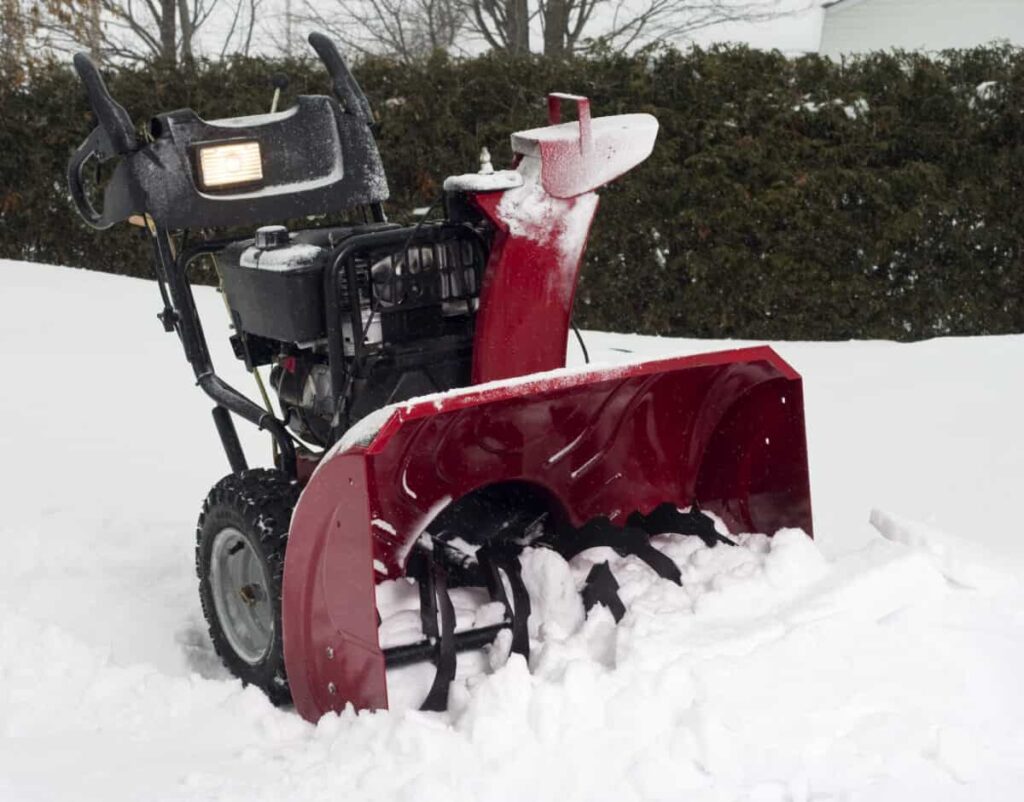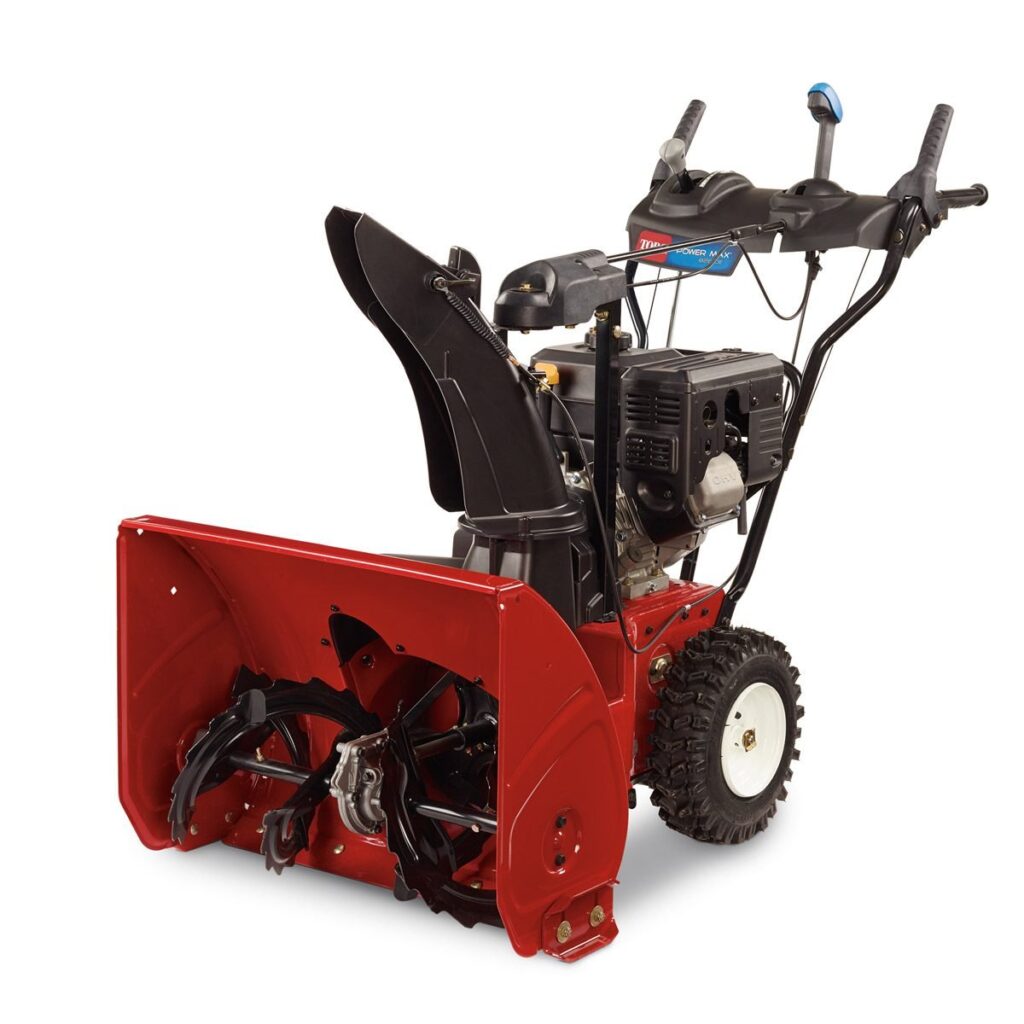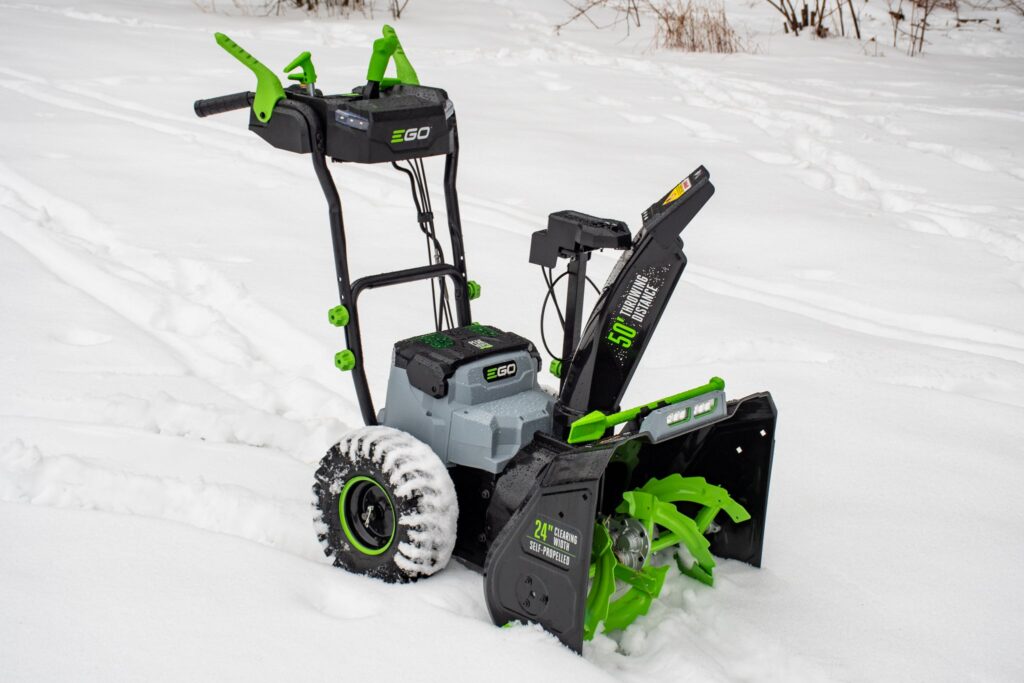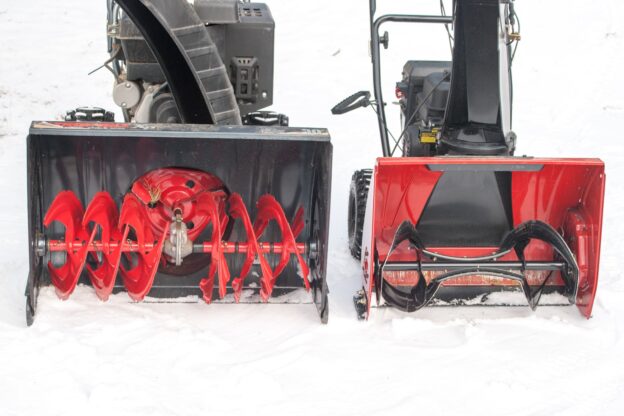Imagine waking up to a winter wonderland, but instead of feeling joy at the first snowfall, you’re burdened with the daunting task of shoveling your way out. The prospect of spending hours in the freezing cold can quickly dampen anyone’s spirits. That’s when the question arises: is it worth it to invest in a snowblower? In this article, we will explore the pros and cons of owning a snowblower, helping you make an informed decision that will save you valuable time and energy during those snowy months.
Factors to Consider
Amount of snowfall
When deciding whether to purchase a snowblower, one of the key factors to consider is the amount of snowfall in your area. If you frequently experience heavy snowstorms or receive significant snow accumulation throughout the winter season, a snowblower can be a valuable investment.
Size of property
The Size of your property is another important consideration. If you have a small walkway or driveway, shoveling by hand may be a manageable task. However, if you have a large property with long driveways or expansive sidewalks, a snowblower can save you significant time and effort.
Physical health and mobility
Your physical health and mobility should also be taken into account. Shoveling heavy, wet snow can be physically demanding and may pose a risk of injury, particularly for those with pre-existing health conditions or limited mobility. A snowblower can provide a more convenient and safer alternative.
Time and effort
Consider how much time and effort you are willing to invest in snow removal. Shoveling can be a time-consuming chore, especially after a heavy snowfall. With a snowblower, you can efficiently clear snow in a fraction of the time, allowing you to focus on other important tasks or enjoy your winter days.
Budget
Finally, your budget is an essential factor to consider when deciding on purchasing a snowblower. Snowblowers vary in price depending on their size, power source, and additional features. It is important to assess your budget and determine what features and capabilities are most important to you before making a purchase.
Advantages of Having a Snowblower
Efficient and time-saving
One of the significant advantages of having a snowblower is the efficiency and time-saving benefits it offers. Snowblowers are powerful machines that can quickly and effectively clear large amounts of snow. With the ability to clear a path in a matter of minutes, you can spend less time and effort on snow removal and more time enjoying the winter season.
Reduced physical exertion
Using a snowblower significantly reduces the physical exertion required compared to shoveling by hand. Instead of straining your back and muscles by repeatedly lifting heavy shovelfuls of snow, you can simply guide the snowblower along your driveway or walkway. This makes snow removal less physically demanding and lowers the risk of injury.
Suitable for large areas
Snowblowers are particularly suitable for large areas. If you have an expansive driveway, sidewalk, or parking lot, manually shoveling snow can be a time-consuming and arduous task. A snowblower can effortlessly clear these large areas, ensuring safe and accessible pathways for both you and others.
Versatility
Snowblowers come in various sizes and types, providing versatility to suit different needs. Whether you have a small residential property or a large commercial space, there is a snowblower suitable for your requirements. Additionally, some models offer adjustable speed and direction controls, allowing you to adapt to various snow conditions.
Less reliance on professional services
Owning a snowblower reduces your reliance on professional snow removal services. Instead of waiting for their availability or incurring the recurring cost of hiring them, you have the convenience of clearing the snow yourself whenever you need to. This independence can be cost-effective and ensures that snow removal is done on your schedule.

This image is property of singlegirlsdiy.com.
Disadvantages of Having a Snowblower
Initial cost
One of the main disadvantages of having a snowblower is the initial cost. Snowblowers can be a significant investment, depending on the size and features you require. However, it is important to consider this as a long-term investment, as the time and effort saved over multiple winters can outweigh the upfront cost.
Maintenance and repairs
Snowblowers require regular maintenance and occasional repairs to ensure optimal performance. This can include cleaning the machine, Changing oil and filters, and inspecting and replacing worn-out parts. While these maintenance tasks are relatively simple, they do require time and may involve additional costs for replacement parts or professional servicing.
Storage space
Snowblowers can take up a considerable amount of storage space, particularly if you have a larger model. It is essential to have adequate storage space, such as a garage or shed, to protect your snowblower from the elements when not in use. If you have limited storage space available, this may be a factor to consider before purchasing a snowblower.
Noise and environmental impact
Snowblowers are known for being noisy machines. While the noise level can vary depending on the model and manufacturer, it may cause disruptions and annoyance to you and your neighbors. Additionally, Gas-powered snowblowers emit exhaust emissions, which contribute to pollution. If noise or environmental impact is a concern for you, considering an electric or battery-powered snowblower may be a better option.
Limited usability
In certain conditions, a snowblower may not be the most effective tool for snow removal. For instance, if the snow is very wet and heavy, it can clog the snowblower’s chute or auger, reducing its efficiency. Similarly, if there is a layer of ice beneath the snow, a snowblower may not be able to effectively clear it. In these cases, alternative snow removal methods may be necessary.
Types of Snowblowers
Single-stage snowblower
A Single-stage snowblower is a compact and lightweight option suitable for clearing light to moderate snowfalls. It features a spinning auger that collects and throws snow out of the discharge chute. Single-stage snowblowers are usually easy to maneuver and suitable for small residential properties with paved surfaces.
Two-stage snowblower
Two-stage snowblowers are designed for heavier snowfalls and larger areas. They have an additional impeller to help propel the gathered snow further away. These snowblowers are equipped with larger engines and often feature adjustable speed controls. Two-stage snowblowers are ideal for medium to large-sized properties and uneven terrain.
Three-stage snowblower
Three-stage snowblowers are the most powerful and robust option available. They have an extra accelerator to break up heavy, compacted snow before it enters the auger. This allows for efficient snow clearing even in challenging conditions. Three-stage snowblowers are suitable for large properties and areas with frequent heavy snowfall.
Electric snowblower
Electric snowblowers are environmentally friendly and require less maintenance compared to gas-powered models. They are typically lightweight, quieter, and easier to start. However, they have limited power and range, making them more suitable for clearing smaller areas with light to moderate snow accumulations.
Gas-powered snowblower
Gas-powered snowblowers are known for their power and ability to handle heavy snowfalls. They are typically larger and more robust than electric models, making them suitable for clearing large areas and tougher conditions. However, they require regular maintenance, and the noise and emissions may be a concern for some users.

This image is property of www.familyhandyman.com.
Considerations for Choosing a Snowblower
Snow conditions
Consider the type and amount of snowfall you typically experience in your area. If you frequently encounter heavy, wet snow, a more powerful snowblower may be necessary. Alternatively, if you have light and fluffy snow, a smaller and less powerful snowblower may suffice.
Property size
The size of your property is a crucial factor in determining the type of snowblower you need. For smaller residential properties, a single-stage or electric snowblower may be sufficient. However, for larger areas or commercial properties, a two-stage or three-stage snowblower with a larger clearing width is necessary for efficient snow removal.
Power source
Consider the power source that best suits your needs and preferences. Electric snowblowers are convenient, produce zero emissions, and require minimal maintenance. Gas-powered snowblowers, on the other hand, offer greater power and range but require regular maintenance and emit exhaust emissions.
Budget
Establish a budget range to help narrow down your options. Consider the long-term savings a snowblower can provide in terms of time and energy. Remember that more advanced features and larger-sized snowblowers often come with a higher price tag. Balancing your budget with the desired specifications can help you make an informed decision.
Ease of use
Evaluate the ease of use of different snowblower models. Look for features such as ergonomic handles, adjustable chute controls, and easy maneuverability. Some snowblowers may also have additional features like heated handles or headlights, which can enhance overall user experience.
Comparing Snowblower Brands
Top brands in the market
Research and compare the top snowblower brands available in the market. Some well-known brands include Toro, Honda, Ariens, Husqvarna, and Cub Cadet. Look for brands that have a good reputation for reliability, performance, and customer satisfaction.
Customer reviews and ratings
Read customer reviews and ratings for different snowblower models and brands. This can provide valuable insights into the real-world performance and user experiences of the snowblowers. Look for consistent positive feedback regarding durability, ease of use, and overall satisfaction.
Warranty and customer support
Check the warranty offered by each snowblower brand. A longer warranty period can provide peace of mind and assurance of the manufacturer’s confidence in their product. Additionally, consider the level of customer support provided by each brand, such as available service centers and ease of obtaining replacement parts.
Additional features and attachments
Explore the additional features and attachments offered by different snowblower brands. Some models may come with features like electric start, heated handles, or LED headlights, which can enhance convenience and usability. Additionally, certain brands may offer attachments such as snow cabs or drift cutters to further customize your snowblower.
Price range
Compare the price ranges of snowblowers from different brands, keeping in mind your budget and desired features. Avoid solely focusing on the price, as quality and performance are equally important factors to consider. Look for a balance between affordability and the brand’s reputation for reliability.

This image is property of cdn.thewirecutter.com.
Steps to Use a Snowblower Safely
Read the manual
Before using a snowblower, carefully read and understand the manufacturer’s manual. The manual provides essential information on operating procedures, safety precautions, and maintenance guidelines specific to your snowblower model.
Wear appropriate clothing and footwear
Always wear appropriate clothing and footwear when operating a snowblower. Dress in layers to stay warm and ensure your clothing does not get caught in the machine. Wear sturdy, non-slip footwear to maintain stability while clearing snow.
Clear the area of obstacles
Before starting the snowblower, clear the area of any obstacles, such as rocks, branches, or debris. These objects can damage the machine or cause it to malfunction. Additionally, ensure that bystanders and pets are a safe distance away.
Start the snowblower correctly
Follow the manufacturer’s instructions for starting your snowblower. This typically involves priming the engine, setting the choke, and pulling the starter cord. Electric-start models may require simply pressing a button or flipping a switch.
Use proper technique
When operating the snowblower, use proper technique to maximize efficiency and safety. Keep a firm grip on the handles, and avoid overloading the machine with excessive snow. Walk behind the snowblower at a steady pace, allowing the machine to clear the snow effectively. Be mindful of the discharge chute’s direction to prevent snow from hitting yourself or others.
Alternative Options to Consider
Shoveling by hand
For small areas or individuals who enjoy the physical activity, shoveling by hand remains a viable option. However, it is important to acknowledge the physical exertion and time required for manual snow removal. Shoveling can be labor-intensive and may not be suitable for individuals with physical limitations or large properties.
Hiring professional snow removal services
If you prefer to avoid snow removal altogether, hiring professional snow removal services is an alternative option. Professional services can handle snow removal quickly and efficiently, ensuring that your property remains safe and accessible. However, this convenience comes at a recurring cost and may not be necessary for areas with infrequent or light snowfall.
Using snowplows or ATV attachments
Snowplows or ATV attachments can be suitable for clearing larger areas, such as parking lots or private roads. These attachments can be mounted on vehicles, allowing for efficient snow removal. However, they require proper equipment and may not be practical for residential areas or properties where maneuverability is limited.
Snow melting systems
Snow melting systems are installed beneath surfaces such as driveways, walkways, or patios to melt snow and ice. These systems use electric heating elements or hydronic heating to heat the surface and prevent snow accumulation. While effective, snow melting systems can be costly to install and may increase energy consumption.
Community or neighborhood assistance
In some cases, community or neighborhood assistance can be an effective way to handle snow removal. Neighbors or community members can come together to help clear snow, making the task more manageable and fostering a sense of community spirit. This option is particularly useful for individuals who may have limited mobility or are unable to operate snow removal equipment.

This image is property of www.snowblowersdirect.com.
Maintenance and Care for Snowblowers
Regular cleaning and lubrication
Regularly clean your snowblower after each use to remove snow, ice, and debris. Lubricate moving parts, such as the auger, to ensure smooth operation. Cleaning and lubrication not only extend the lifespan of your snowblower but also prevent clogs and malfunctions.
Proper fuel and oil management
Be mindful of proper fuel and oil management for gas-powered snowblowers. Use the recommended fuel type and mix ratios specified by the manufacturer. Regularly check and change the oil as per the recommended intervals. Proper fuel and oil management contribute to the overall performance and longevity of your snowblower.
Checking and replacing parts
Inspect your snowblower regularly, especially before the winter season begins. Check the condition of the belts, shear pins, and skid shoes. Replace any worn-out or damaged parts to maintain optimal performance. It is recommended to keep spare parts on hand so that replacements can be made quickly if needed.
Storing the snowblower correctly
When not in use, store your snowblower in a dry and protected area. Clean the machine thoroughly to remove any salt, dirt, or moisture, as these can cause corrosion. Place a cover or tarp over the snowblower to further protect it from the elements. Proper storage ensures that your snowblower remains in good condition for the next winter season.
Scheduled professional servicing
Consider scheduling professional servicing for your snowblower at regular intervals. Professional technicians can perform thorough inspections, check for wear and tear, and make any necessary repairs or adjustments. Scheduled servicing helps maintain optimal performance and prevents potential breakdowns during the winter season.
Conclusion
Deciding whether to invest in a snowblower requires careful consideration of various factors. The amount of snowfall, property size, physical health, time and effort, and budget all play a crucial role in making this decision. While snowblowers offer several advantages such as efficiency, reduced physical exertion, and versatility, disadvantages such as initial costs, maintenance, and storage space should also be taken into account. By choosing the right type of snowblower based on snow conditions, property size, power source, budget, and ease of use, you can maximize the benefits of owning a snowblower. Additionally, considering alternative options, maintaining and caring for your snowblower, and exploring community assistance can help you manage snow removal effectively, ensuring safe and accessible pathways during the winter season.

This image is property of cdn.thewirecutter.com.
